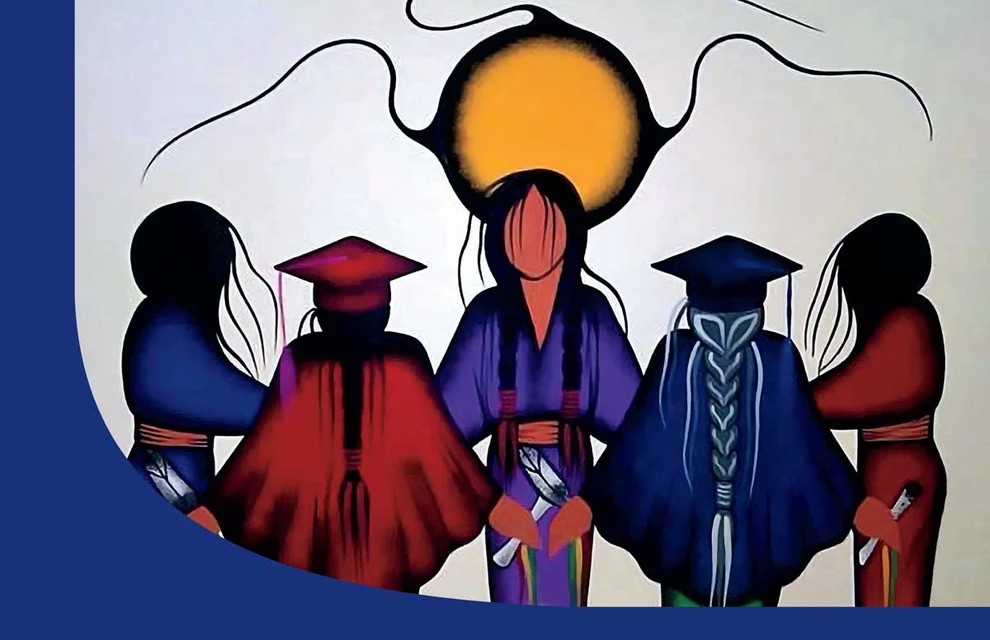
Indigenous Education as the Impetus to Economic Resilience
As we navigate the complex landscape of Indigenous procurement and economic development, a question that consistently occupies my thoughts is: What does economic resilience truly mean for Indigenous communities? Community development is at the heart of catalyzing economic resilience; the discussion today is mainly through the lens of education. While the definitions of community development may vary among Indigenous nations, the overarching principle remains steadfast—to forge robust, healthy, and resilient nations that can endure generations. By unravelling the layers of economic resilience, we endeavour to unearth insights that contribute to the sustainable development and prosperity of Indigenous Nations.
Education is emerging as a pivotal conduit for heightened community development opportunities in the context of Indigenous nations, thus identifying a pillar that the Indigenous Prosperity Centre (IPC) would like to support. According to Statistics Canada, the high school completion rate for on-reserve Indigenous youth aged 18-24 was 52.2 percent in 2021, a figure notably lower than the 73.3 percent recorded for those living off-reserve. In stark contrast, non-Indigenous youth in the same age bracket exhibited a much higher graduation rate at 89.6 percent. The crucial role of academic engagement and support becomes evident, especially in the final years of high school studies. Only some individuals have the opportunity to revisit studies due to personal and financial constraints, thus posing a substantial barrier for Indigenous nations to flourish (Statistics Canada, 2023). The misguidance of academic advisors in the public school system has directed Indigenous students toward non-academic programs or modified course streams, creating formidable barriers to meeting post-secondary prerequisites (“Aboriginal Learners in British Columbia’s Public Post-Secondary System,” 2021). My personal experience in academia underscores this point, too, as I was steered towards trades rather than pursuing more academic-focused disciplines, resulting in the need for additional time to upgrade and embark on my post-secondary journey. For many years, I felt many steps behind my peers, and if it weren’t for the support of my nation, it was unlikely that I would have pursued my academic aspirations due to financial constraints.
Our hope at IPC is to help establish formidable solutions to address these academic inequalities. With eight out of ten jobs necessitating some form of post-secondary education or training and 42 percent requiring a bachelor’s degree alongside work experience, addressing these barriers becomes paramount (Statistics Canada, 2023). This scenario highlights the urgent need for additional research and updates to policy, specifically in the context of re-examining the 94 Calls to Action put forth by the Truth and Reconciliation Commission (TRC). The Federal government must help translate the 94 Calls to Action into tangible outcomes; achieving Zero Calls to Action in 2023 as an example is not the path forward. It’s been eight years since the 94 Calls to Action were released, 81 of which remain unfulfilled, that is an annual completion rate of 1.625 percent. Out of the 13 completed, none address the educational actions set forth by the TRC. If Canada continues at this pace, Indigenous peoples will have to wait until 2081 for reconciliation (Jewell & Mosby, 2023). Collaborative efforts from the Federal government, provinces, Indigenous nations, local governments, and school boards are required to design and implement programs and policies that effectively address these barriers and foster holistic community development.
References
Aboriginal Learners in British Columbia’s Public Post-Secondary System. (2021). In Ministry of Advanced Education and Skills Training. https://www2.gov.bc.ca/assets/gov/education/post-secondary-education/aboriginal-education-training/aboriginal_learners_report_2021.pdf
Jewell, E., & Mosby, I. (2023). Calls to action accountability: A 2023 status update on reconciliation. In Yellowhead Institute. https://yellowheadinstitute.org/wp-content/uploads/2023/12/YI-TRC-C2A-2023-Special-Report-compressed.pdf
Statistics Canada. (2023, October 27). Postsecondary educational attainment and labour market outcomes among Indigenous peoples in Canada, findings from the 2021 Census. https://www150.statcan.gc.ca/n1/pub/75-006-x/2023001/article/00012-eng.htm
COVER IMAGE:
Education Notebook is by artist Simone McLeod. Her cultural background is Cree-Ojibway.
The artist is paid a royalty on every sale. To Purchase Please visit: https://www.kultrunmarket.com/products/indigenous-art-notebook-education
The notebooks measure 8.5″ x 5.5″ and include 14 double-sided lined recyclable pages watermarked with the cover image. Also included on the back of the notebooks is the artists name, signature, tribal affiliation, and biography.
